Proof of megalodon extinction is in their teeth, scientists say
What happened to the megalodons?
Megalodons are considered to be one of the largest predators to have ever lived and were the size of nearly two school buses. So, why did they become extinct?
TAMPA, Fla. - They're considered to be one of the largest predators that have ever lived. Otodus megalodon means "big tooth" and the massive shark lived up to its name.
A megalodon’s teeth and the rest of its massive body weighed around 110,000 pounds and was the length of two school buses – 50-60 feet long. Their mouth was 10 feet wide, and each individual tooth was seven inches long, according to the Natural History Museum.
They came onto the scene after the dinosaurs became extinct, and they stuck around until 3.5 million years ago.
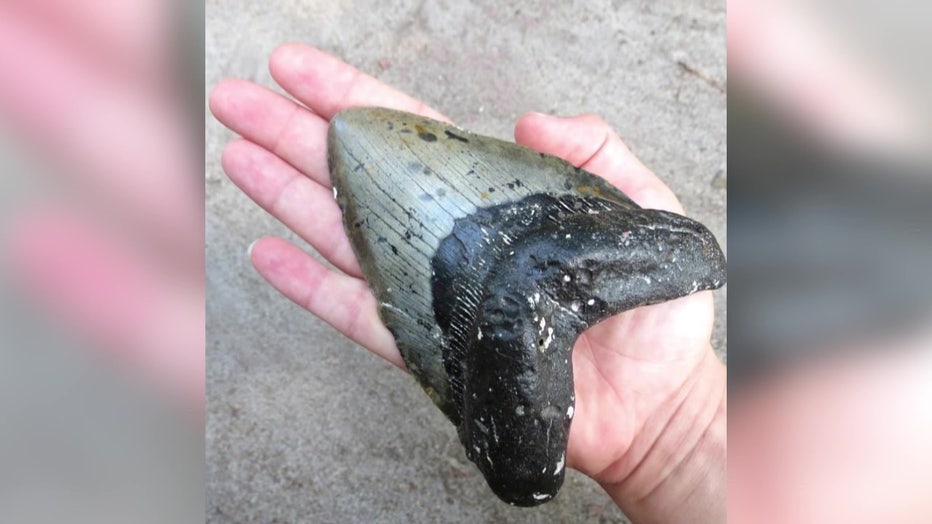
Megalodon tooth, photo courtesy Museum of Natural History
They ate whales, large fish, and other sharks. Some have questioned whether the megalodon maybe still exists in the expanse of the deep ocean.
"Folks, I am here to tell you, positively, unequivocally. They are gone," explained Meteorologist Dave Osterberg.
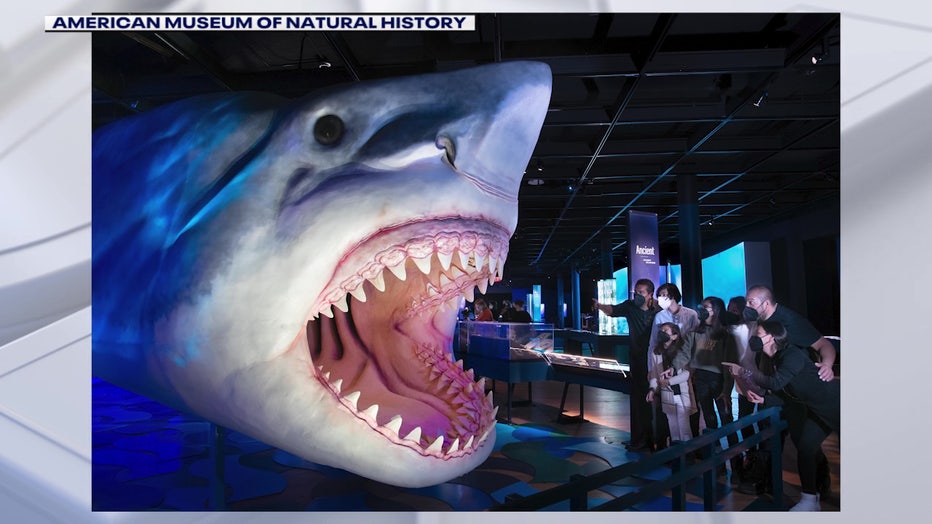
Recreation of a life-sized megalodon at the Museum of Natural History
All sharks produce, and ultimately lose, tens of thousands of teeth. You can go down to the beach right now, like on Palm Island, and see shark’s teeth.
MORE: Sharks swimming closer to crowded beaches than previously thought, study says
"When you find one of these megalodon teeth, it's from 3.5 million years ago. Nobody has found a megalodon tooth that's less than 3.5 million years old," Osterberg explained.
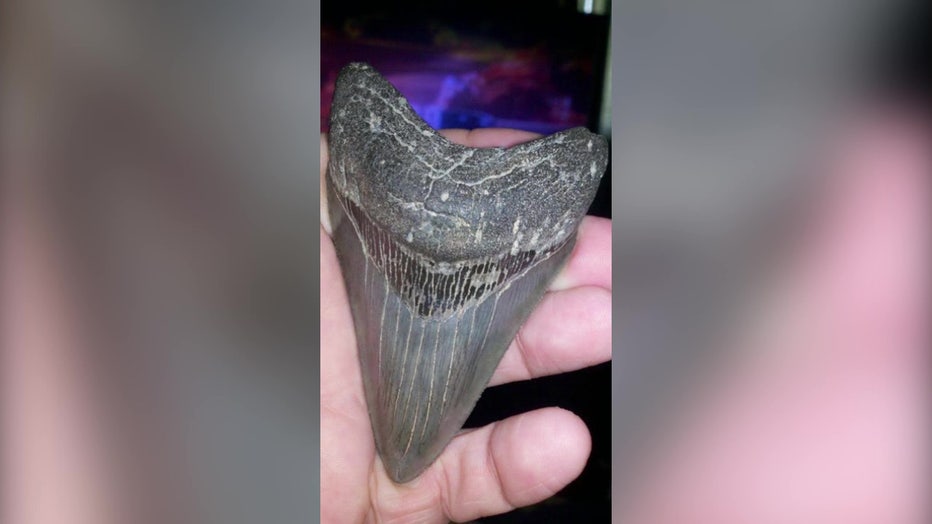
Megalodon tooth, photo courtesy Museum of Natural History
That gives us an idea of last time they were alive.
The massive shark species spent its time very close to the coast because that’s where they found their prey.
Coast Guard rescues fisherman bitten by shark near Bahamas
A fisherman who was bitten by a shark near the Bahamas was pulled to safety by a U.S. Coast Guard helicopter crew after his mates tightened a tourniquet around his arm.
RELATED: Fisherman bitten by shark near Bahamas rescued by Coast Guard
"So, don't you think, by now, somebody would have noticed a 110,000-pound shark somewhere, if it was hanging around by the coast?" Osterberg wondered.
But why did they disappear?
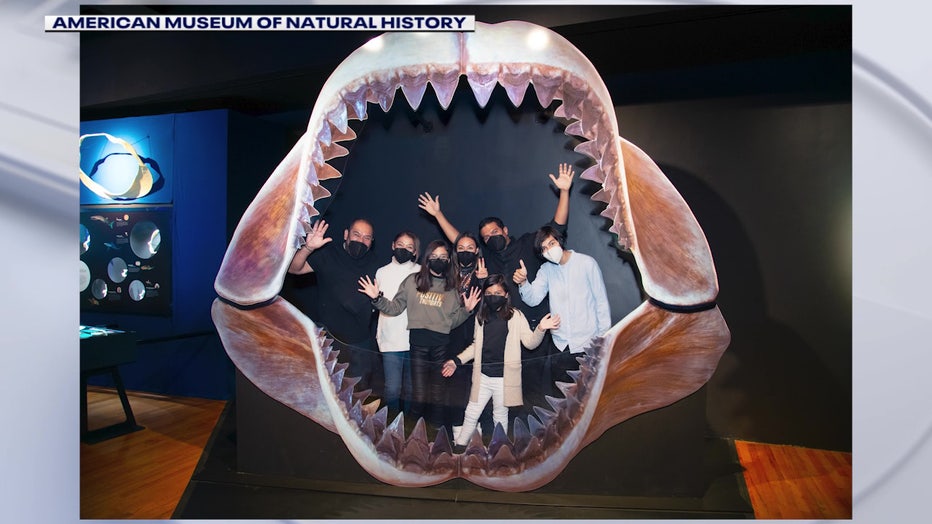
People stand inside the mouth of a life-sized megalodon, photo courtesy Museum of Natural History
3.5 million years ago, the global water temperature dropped, which was very stressful for the megalodon.
They made it, but their prey started to disappear because they couldn't stand the climate change.
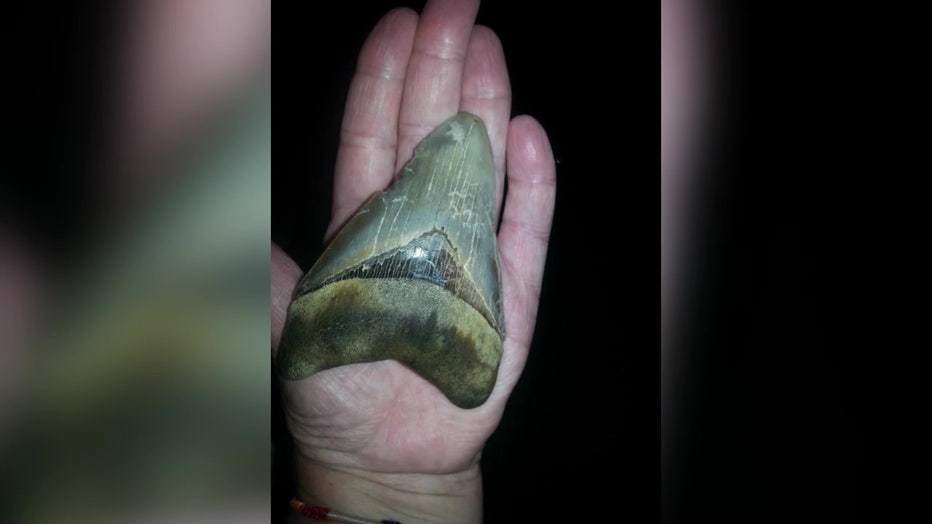
Megalodon tooth, photo courtesy Museum of Natural History
Without food, and with competition from other large sharks which could reproduce faster, the megalodon was lost.
It took the Megalodon is 10 times longer to reach the age where it could reproduce. Meanwhile, great white sharks were reproducing much faster at a much younger age.
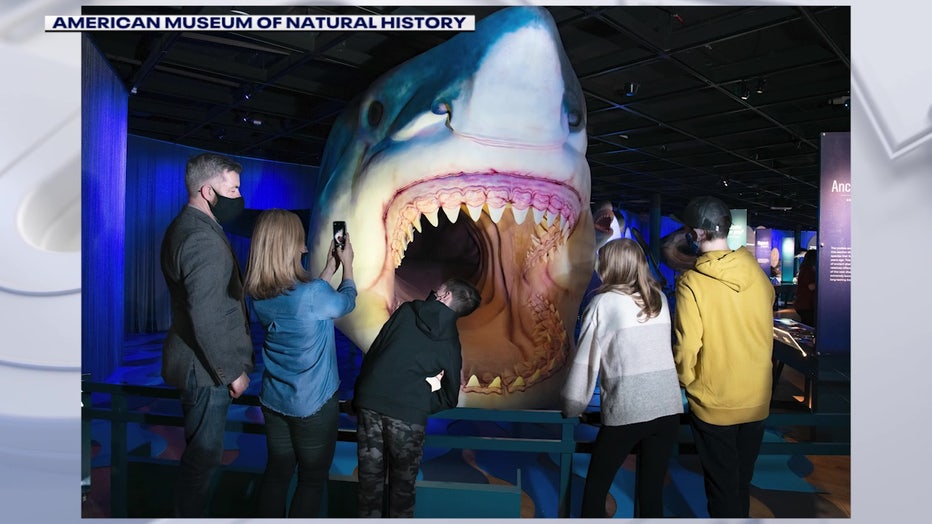
Recreation of a life-sized megalodon at the Museum of Natural History
So, if you find a megalodon tooth that is younger than 3.5 million years old, you might be able to convince the scientific community otherwise. But it hasn’t been done, yet.

